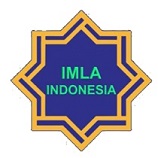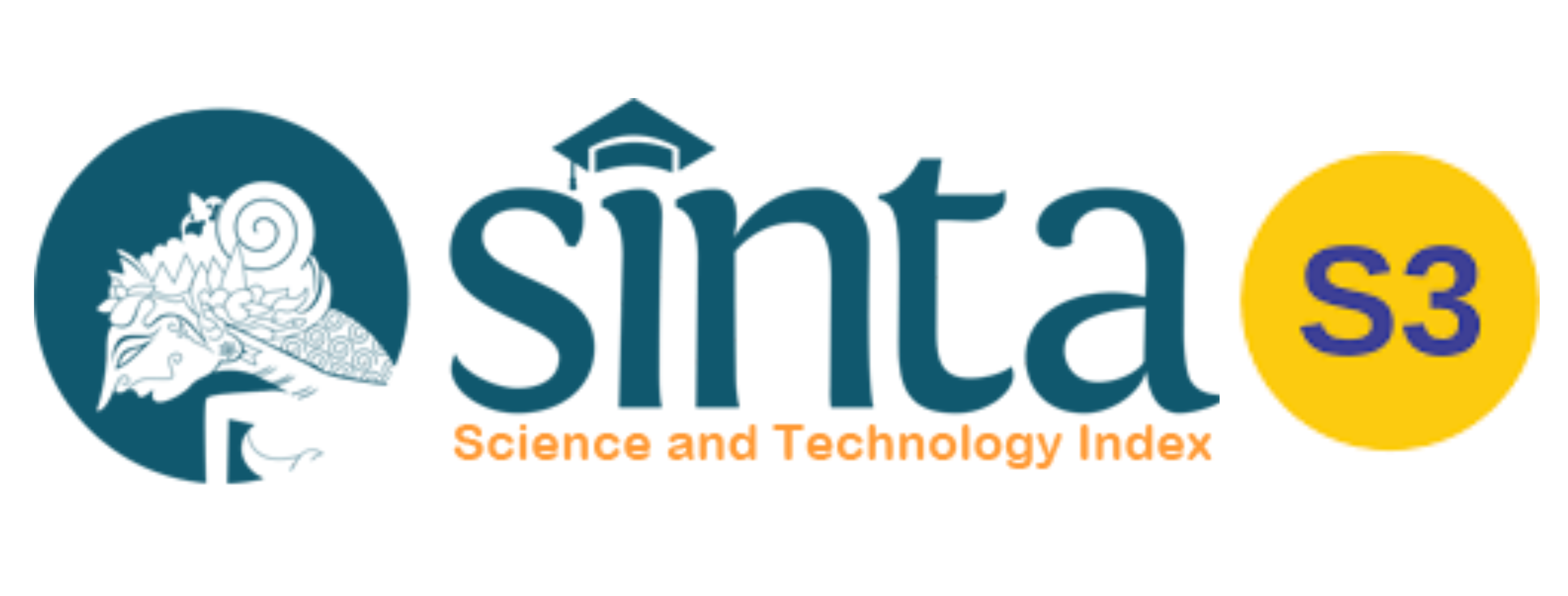SOCIAL RELATION TRANSFORMATION IN THE JAVANESE ADDRESSES EXPRESSIONS TRANSLATION INTO ARABIC IN GADIS KRETEK NOVEL
Abstract
Keywords
Full Text:
PDFReferences
Adi, D. P., & Amalia, A. F. (2022). Toleransi Beragama dalam Praktek Sosial Masyarakat: Studi Kasus Hubungan Mayoritas dan Minoritas Agama di Desa Sukoreno Kecamatan Umbulsari Kabupaten Jember. Al-Isnad: Journal of Islamic Civilization History and Humanities, 3(1), 52–60. https://doi.org/10.22515/isnad.v3i1.5273
Aditia, R. (2021). Fenomena Phubbing: Suatu Degradasi Relasi Sosial Sebagai Dampak Media Sosial. KELUWIH: Jurnal Sosial Dan Humaniora, 2(1), 8–14. https://doi.org/10.24123/soshum.v2i1.4034
Afful, J. B. A. (2006). Address terms among university students in Ghana: A case study. Language and Intercultural Communication, 6(1), 76–91. https://doi.org/10.1080/14708470608668909
Al-Sofi, B. B. M. A., & Abouabdulqader, H. (2020). Bridging the gap between translation and culture: towards a cultural dimension of translation. International Journal of Linguistics, Literature and Culture, 6(1), 1–13. https://doi.org/10.21744/ijllc.v6n1.795
Al Hidayah, R., Maftuh, B., & Malihah, E. (2024). Relasi Sosial Antar Etnis (Studi Kasus pada Masyarakat di Kota Pontianak). Hudan Lin Naas: Jurnal Ilmu Sosial Dan Humaniora, 5(1), 1–16. http://dx.doi.org/10.28944/hudanlinnaas.v5i1.1385
Alqarni, M. (2024). Direct words, deep bonds: The tradition of father-son advice in ancient Arabia. Journal of Pragmatics, 230, 15–24. https://doi.org/10.1016/j.pragma.2024.06.013
Bonvillain, N. (2019). Language, culture, and communication: The meaning of messages. Rowman & Littlefield.
Brown, P., & Levinson, S. C. (1987). Politeness: Some universals in language usage (Vol. 4). Cambridge university press.
Chan, L. (2018). A survey of the ‘new’discipline of adaptation studies: between translation and interculturalism. In Chinese Translation Studies in the 21st Century (pp. 11–18). Routledge.
Chatlina, C. B., Mulyana, A., & Amalia, M. (2024). Pengaruh Perkembangan Teknologi Informasi Dan Komunikasi Terhadap Kualitas Hubungan Sosial Dalam Keluarga. KOMUNITAS: Jurnal Ilmu Sosiologi, 7(1), 19–38. https://doi.org/10.30598/komunitasvol7issue1page19-38
Chen, J.-K., Wang, S.-C., Chen, Y.-W., & Huang, T.-H. (2021). Family climate, social relationships with peers and teachers at school, and school bullying victimization among third grade students in elementary schools in Taiwan. School Mental Health, 13(3), 452–461. https://doi.org/10.1007/s12310-020-09404-8
Creswell, J. W., & Creswell, J. D. (2017). Research design: Qualitative, quantitative, and mixed methods approaches. Sage publications.
Gusnawaty, G., Lukman, L., Nurwati, A., Adha, A., Nurhawara, N., & Edy, A. (2022). Strategy of kinship terms as a politeness model in maintaining social interaction: local values towards global harmony. Heliyon, 8(9).
Hanafi, A., & Yasin, M. (2023). Upaya Memperkuat Hubungan Sosial dalam Kehidupan Bermasyarakat. Jurnal Ilmu Pendidikan & Sosial (Sinova), 1(2), 51–62. https://doi.org/10.71382/sinova.v1i2.19
Heliyanty, D. (2022). Peningkatkan Hubungan Sosial Antar Teman Sebaya Melalui Layanan Bimbingan Kelompok. Pedagogia: Jurnal Ilmiah Pendidikan, 14(1), 7–10. https://doi.org/10.55215/pedagogia.v14i1.4803
Holmes, J., & Wilson, N. (2022). An introduction to sociolinguistics. Routledge.
Howard, K. (2007). Kinterm usage and hierarchy in Thai children’s peer groups. Journal of Linguistic Anthropology, 17(2), 204–230. https://doi.org/10.1525/jlin.2007.17.2.204
Jamaludin, J., & Nuruddin, N. (2022). Relasi Sosial Minoritas Muslim di Kalangan Mayoritas Kristen di Dusun Nggeru Kopa Desa Palama Kec. Donggo Kab. Bima. JPIn: Jurnal Pendidik Indonesia, 5(1), 146–159. https://doi.org/10.47165/jpin.v5i1.208
Jati, W. R. (2021). Relasi Antar Umat Mayoritas dan Minoritas: Studi Masyarakat Tionghoa di Surabaya. Harmoni, 20(2), 276–292. https://doi.org/10.32488/harmoni.v20i2.499
Katan, D., & Taibi, M. (2021). Translating cultures: An introduction for translators, interpreters and mediators. Routledge. https://doi.org/10.4324/9781003178170
Koster, C. (2012). Comparative approaches to translation. In Handbook of Translation Studies: Volume 2 (pp. 21–25). John Benjamins Publishing Company.
Kumala, R. (2012). Gadis Kretek. Gramedia Pustaka Utama.
Lase, D. K., & Amal, B. K. (2024). Relasi Sosial Perkawinan Semarga Pada Etnis Nias di Kota Sibolga. Jurnal Ilmiah Muqoddimah: Jurnal Ilmu Sosial, Politik, Dan Humaniora, 8(1), 247–259.
Leech, G., & Tatiana, L. (2014). Politeness: West and east. Russian Journal of Linguistics, 4, 9–34.
Liddicoat, A. J. (2016). Intercultural mediation, intercultural communication and translation. Perspectives, 24(3), 354–364. https://doi.org/10.1080/0907676X.2014.980279
Magnan, M.-O., Collins, T., Darchinian, F., Kamanzi, P. C., & Valade, V. (2024). Student voices on social relations of race in Québec Universities. Race Ethnicity and Education, 27(2), 156–172. https://doi.org/10.1080/13613324.2021.1890564
Marzuki, M., & Fikri, M. (2022). Minoritas Agama di Sekolah Mayoritas: Relasi Antar Umat Beragama pada Sekolah Umum di Provinsi Aceh, Bali dan Sulawesi Utara. EDUKASI: Jurnal Penelitian Pendidikan Agama Dan Keagamaan, 20(1), 94–107. https://doi.org/10.32729/edukasi.v20i1.1143
Mukminin, M. S. (2025). Pragmatic Equivalence of Illocutionary Speech Acts Translation in The Song Lyrics Nemen: Javanese-Arabic Translation. Translation and Linguistics (Transling), 5(1), 1–13. https://doi.org/10.20961/transling.v5i1.99158
Mukminin, M. S., Putra, L. D., & Ahmed, A. (2025). Translation strategy of Indonesian-English address terms in Perempuan Tanah Jahanam subtitles. Linguistics Initiative, 5(1), 62–74. https://doi.org/10.53696/27753719.51245
Munawwir, A. W. (1997). Al-Munawwir: Kamus Arab-Indonesia. Pustaka Progressif.
Neelakshi, S., & Amr, K. (2021). Kinship terms as indicators of identity and social reality: A case study of Syrian Arabic and Hindi. Russian Journal of Linguistics, 25(1), 125–146.
Neubert, A. (2011). Competence in language, in languages, and in translation. In Developing translation competence (pp. 3–18). John Benjamins Publishing Company.
Nur, H. B. M., Mohamed, S. S. B. P., & Rambely, N. A. S. (2021). Hubungan Sosial Mayoritas Islam dengan Minoritas Agama-agama Lain di Kota Banda Aceh-Indonesia. Jurnal Al-Ijtimaiyyah, 7(2), 213–236. http://dx.doi.org/10.22373/al-ijtimaiyyah.v7i2.11521
Nursanti, E., Arimi, S., & Wijayanti, N. (2024). Face and Politeness in Javanese Multilingual Interaction. Issues in Language Studies, 13(1), 181–197. https://doi.org/10.33736/ils.5690.2024
Okafor, A. Y. (2022). Address terms used for birthday wishes: a case of students and lecturers of Nwafor Orizu college of education, Nsugbe. International Journal of Applied Research in Social Sciences, 4(4), 105–120. https://doi.org/10.51594/ijarss.v4i4.340
Parkinson, D. B. (1985). Constructing the social context of communication. Terms of address in Egyptian Arabic. Mouton de Gruyter.
Priestley, M., Hall, A., Wilbraham, S. J., Mistry, V., Hughes, G., & Spanner, L. (2022). Student perceptions and proposals for promoting wellbeing through social relationships at university. Journal of Further and Higher Education, 46(9), 1243–1256. https://doi.org/10.1080/0309877X.2022.2061844
Rahayu, O. S., Saogo, K. O. K. L., Harlena, T. J., & Yuseftri, G. (2025). Kosa Kata Panggilan dalam Bahasa Serawai Di Desa Padang Kapuk, Bengkulu Selatan. DIBSA, 3(2), 64–68. http://dx.doi.org/10.29300/dibsa.v3i2.7606
Ramadhan, M. (2018). Fātatu As-Sajā’ir. Sefsafa Publishing.
Raninen, J., Larm, P., Svensson, J., Livingston, M., Sjödin, L., & Karlsson, P. (2021). Normalization of non-drinking? Health, school situation and social relations among Swedish ninth graders that drink and do not drink alcohol. International Journal of Environmental Research and Public Health, 18(21), 11201. https://doi.org/10.3390/ijerph182111201
Sholehawati, E. V. N., Purnomo, B., & Munifah, S. (2023). Budaya Jawa dalam Novel Karya SW Achmad Centhini Perempuan Sang Penakluk di Langit Jurang Jangkung. Jurnal Bahasa Dan Sastra, 10(1), 31–39.
Smith-Hefner, N. J. (1988). Women and politeness: The Javanese example. Language in Society, 17(4), 535–554. https://doi.org/10.1017/S0047404500013087
Venuti, L. (2017). The translator’s invisibility: A history of translation. Routledge.
Wardhaugh, R. (2006). An Introduction to Sociolinguistics. Blackwell.
Yu, H., & Ren, C. (2013). A Comparative Study of Social Address Terms in Chinese and English. Higher Education of Social Science, 5(3), 35–40. http://dx.doi.org/10.3968/j.hess.1927024020130503.H941
Yuan, M. (2018). Translation, Modernity, Acceptability—From Language Reform to Cultural Resistance in Translation Practice in China. 3L, Language, Linguistics, Literature, 24(3).
Yunidar, M. (2025). Bahasa, Budaya, dan Masyarakat: Perspektif Sosiolinguistik Kontemporer. Kaizen Media Publishing.DOI: https://doi.org/10.20961/cmes.18.1.101679
Refbacks
- There are currently no refbacks.
Copyright (c) 2025 Center of Middle Eastern Studies (CMES)

This work is licensed under a Creative Commons Attribution-ShareAlike 4.0 International License.
| Copyright of CMES ISSN 2085-563X (print) and ISSN 2502-1044 (online) CMES Journal is licensed under a Creative Commons Attribution-ShareAlike 4.0 International License. | CMES (Center of Middle Eastern Studies) Print ISSN: 2085-563X Online ISSN: 2502-1044 Website: https://jurnal.uns.ac.id/cmes/index Email: cmes@mail.uns.ac.id Published by: Universitas Sebelas Maret Office: Department of Arabic Literature, Faculty of Cultural Science, Universitas Sebelas Maret Ir. Sutami Street, No. 36A, Surakarta, Jawa Tengah 57126 Phone: +62 822-4000-2313 |















